Texts taken from the SMS group website
1871: Many roots, one company - Carl Eberhard Weiss starts a forging business
SMS group is a global company with approximately 14,500 employees at 100 locations in more than 30 countries around the world. But where does the company originally come from? From Hilchenbach? From Düsseldorf? And why are we going to move to Mönchengladbach in 2023? These questions take us on a journey back in time, to the many roots of our company.
It was 1871 when Carl Eberhard Weiss, a blacksmith born near Stuttgart, established a tool factory in the bustling city of Siegen. At 30 years old, he had been living in Siegen for only seven years, and we can only imagine what brought him there. Back then, the Siegen region was at the heart of Germany's steel and mining industry, attracting businesses from all over the country. With his wide range of devices, tools, machines, and small vehicles, Weiss quickly found a foothold in the region, soon providing products to the most renowned companies.
As time went on, Weiss's business grew, and he began to sell his products also to customers beyond Germany's borders. Carl and Ernst Heinrich Weiss, the sons of the company's founder, played a significant role in driving growth, in particular through the acquisition of other companies in the region. In 1927, the company made a strategic move into the future-oriented construction of rolling mills, and the headquarters were relocated from Siegen to the nearby town of Hilchenbach. As the 1930s rolled around, the third generation of the Weiss family took over the helm. Under the leadership of Bernhard Weiss, the company was given a name everyone still knows it by today in the Siegerland region. Shortened from its original form, it became a brand: Siemag.
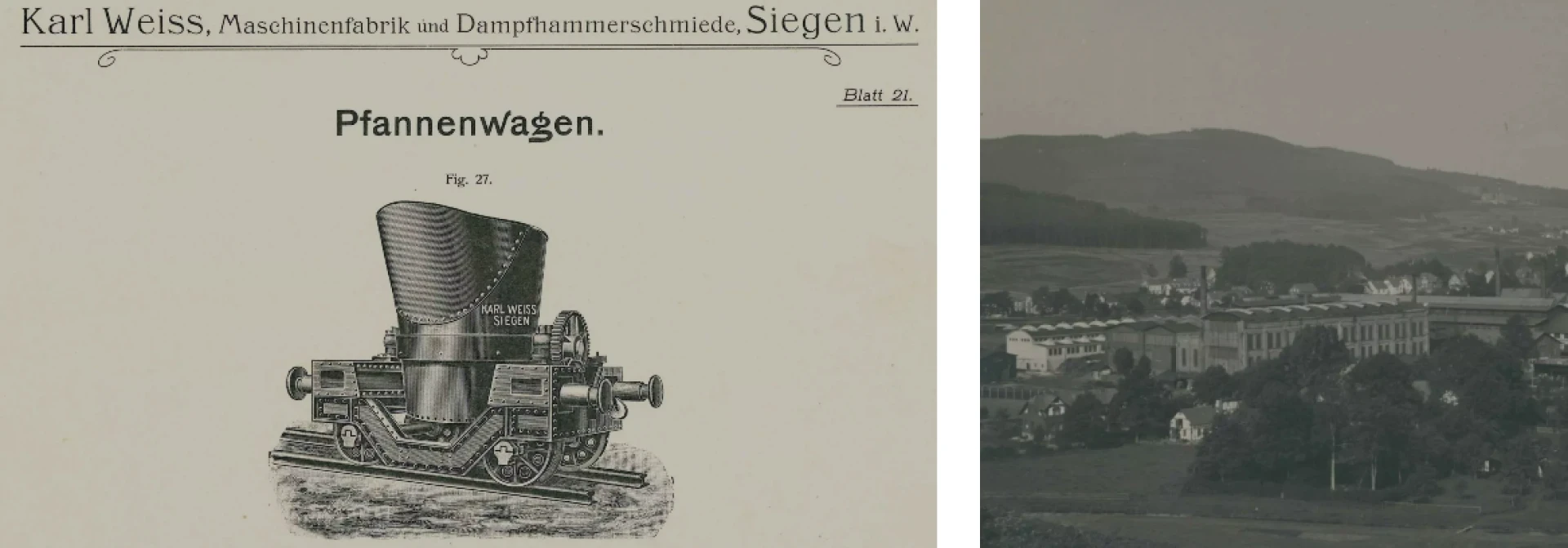
Roots in Luxembourg, Mönchengladbach and Düsseldorf
The late 19th century was marked by the rise of several young entrepreneurs, and Carl Eberhard Weiss was not the only one. Already in 1870, a man named Eugène Muller established a boiler factory in Luxembourg. 20 years later, a dynamic engineer took over the company. His name: Paul Wurth. Initially, the company focused on bridge construction, but in the 1950s expanded into a new business area – the construction of blast furnaces.
In 1872, brothers Michael and Peter Meer established a machine factory and iron foundry in Mönchengladbach. In the beginning, the company manufactured compressors, pumps, and steam engines, but eventually expanded its product range to include seamless tube mills. In 1926, the company was acquired by the Mannesmann group and renamed "Maschinenfabrik Meer."
In 1901, the history of "Schloemann" began in Düsseldorf. The founder, Eduard Schloemann, was already 61 years old at that time. In contrast to the companies of the Weiss family, Paul Wurth or the Meer brothers, "Schloemann" was solely a design office and did not have its own manufacturing facilities. It specialized early on in the construction of presses and rolling mills and in the 1920s became part of the German engineering company MAN.

Three letters that stand for a global market leader: SMS
The name SMS dates back to 1973, when Siemag and Schloemann merged to form Schloemann-Siemag AG – or in short: SMS. For Heinrich Weiss, the great-grandson of Carl Eberhard Weiss, it was clear at that time that Siemag alone would not be able to compete on the global market. Therefore, he continued to pave the way for growth also in the years to come. In 1999, SMS expanded by acquiring "Meer", a former subsidiary of the Mannesmann metallurgy division which would later be specializing in long and forged products. The only missing piece to become a full-line supplier was iron production, which SMS gradually acquired through the purchase of shares in Paul Wurth starting in 2012.
And that, in brief, is the history of SMS. Of course, this is only a small part of the story, as mergers and acquisitions over the years have added many other well-known brands to SMS group, including Concast, Demag, Eumuco, Hasenclever, Mevac and Sack. And up to this point, it is primarily a German story, and the international companies and locations that contribute to our unique character today are not yet part of the narrative. In part 2 of our series, we will explore this aspect of the SMS history.
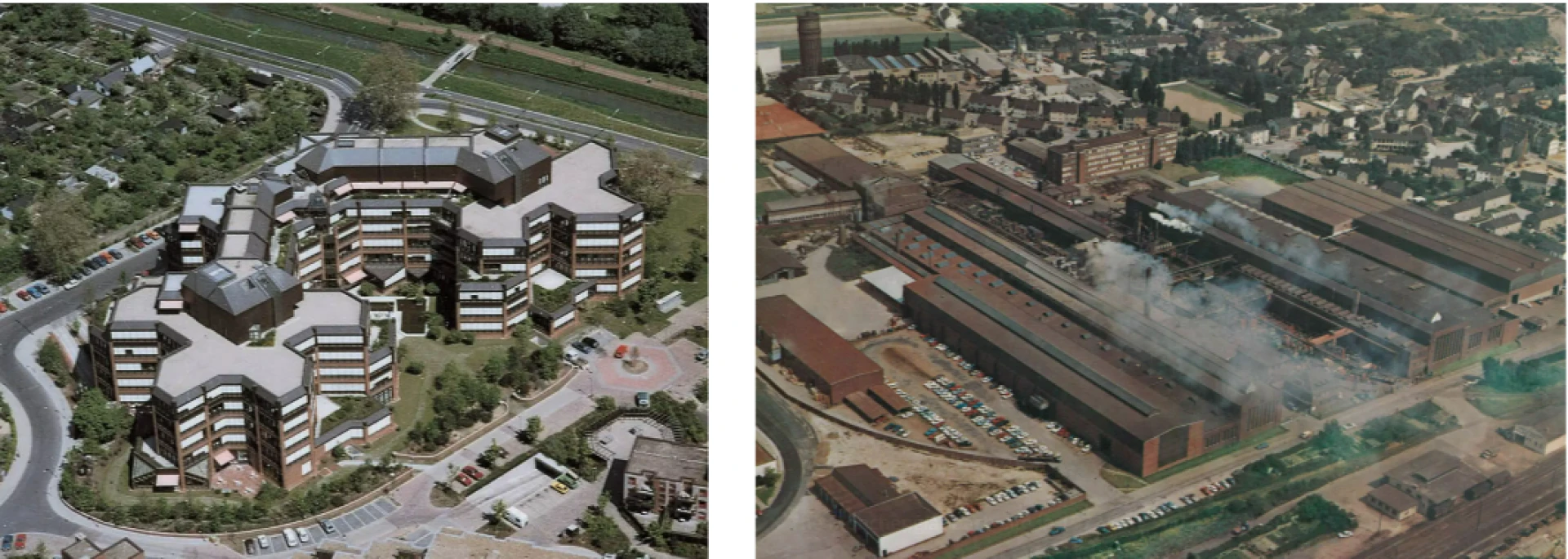
1904 : Global reach and local expertise - We supply our first rolling mill to China
In 1904, an unusual order was received in Dahlbruch, Germany: The Hanyang Iron & Steel Works, based near Shanghai, put in a request for a blooming mill. While the order itself might not sound so spectacular today, back then it’s hard to imagine how a Chinese company, located more than 10,000 kilometers away, would have even heard of a German rolling mill builder - not to mention the logistical and cultural challenges this project would involve. For instance, how did the two companies manage to communicate with each other? Did employees from the Siegerland region accompany the transport to China or assemble the plant on site? Unfortunately, the answers to these questions remains unknown. What we do know, however, is that the 2-high reversing mill that was delivered remained in operation until the mid-1960s and established our long-standing, excellent reputation in China.
It was eight years earlier, in 1896, which marked SMS’ initial steps abroad with the opening of our first international office and production facilities in Riga, which at the time was still a part of the Russian Empire. This initial venture, however, proved costly, as in 1904 the factory burned down. While it was immediately rebuilt, the machines were eventually lost for good during the First World War. In the decades that followed, sales, design and order handling were almost exclusively carried out from Germany. Nevertheless, international influences proved crucial in the company’s ongoing growth and success. For example in the 1950s, SMS’ then owner, Bernhard Weiss, recognized some of the technical superiorities of American companies within the industry. He then concluded license agreements with American rolling mill builders, in order to benefit from their know-how, particularly in the area of flat rolling, and was able to take a competitive advantage over the local German competition. At the same time, the license partners benefited from improvements made by our engineers, making this a win-win.

1970s: First steps towards a global organization
As the business grew and became more and more international from the 1970s onwards, SMS decided to build a local presence across major global markets, starting in The USA. With Schloemann having already established an office in Pittsburgh at the end of the 1920s, the city also became the headquarters of the American SMS company in the 1980s. At the beginning of the 2000s, the company took over Millcraft, laying the foundation for our extensive service business in the USA.
The moves to India and China followed in the 1990s. Here, SMS initially often entered into joint ventures with local companies in order to gain a foothold in these markets. The beginnings were modest in some cases: SMS India, for example, started in 1994 with thirteen employees. In other key markets, such as Italy, SMS established itself mainly through acquisitions. The roots of our two most important sites in Tarcento and Milan, for example, lie in long-established companies such as S.I.M.A.C., Innocenti and Innse.
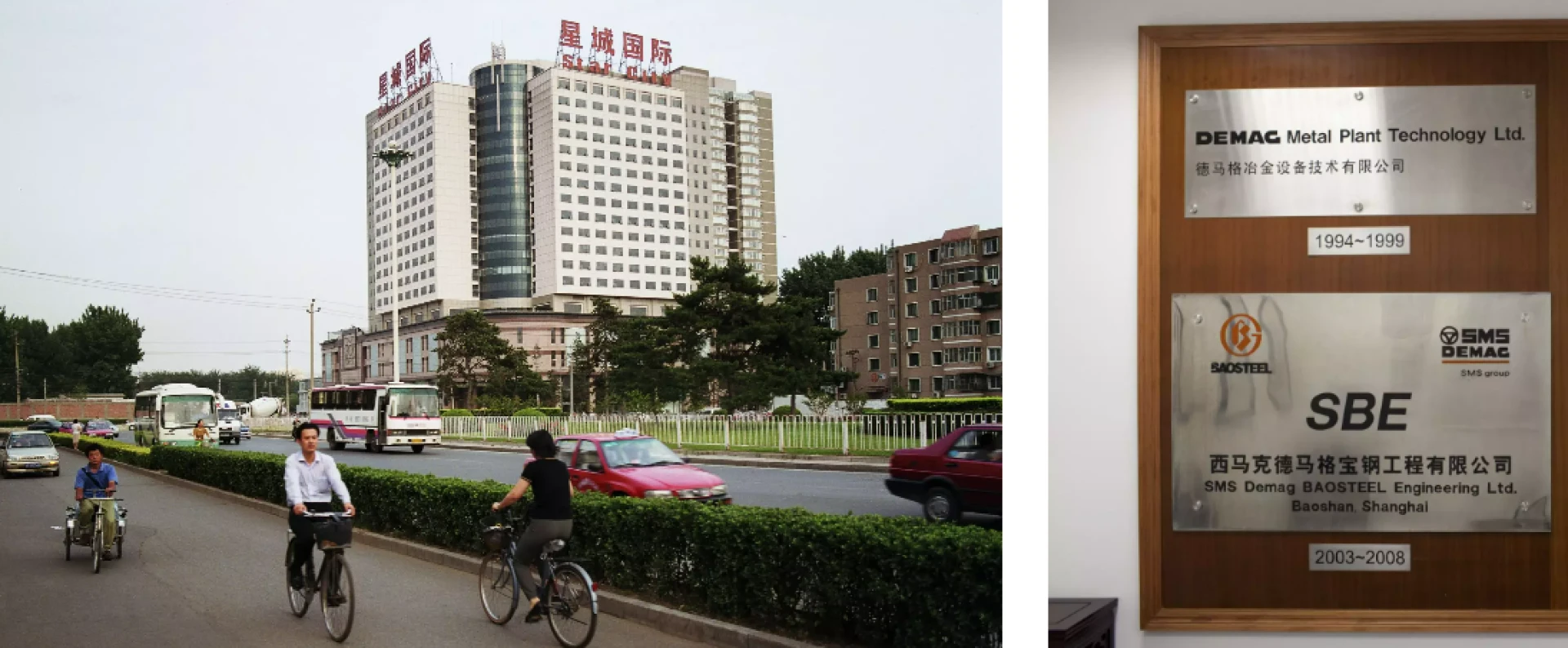
Today: Global collaboration
Today, more than a century after the extraordinary order from Shanghai, SMS is a globally positioned company with around 100 offices and workshops in 30 countries. Six out of ten employees are based outside Germany - with India, China and the USA leading the way. This international presence is also reflected in sales. In 2022, almost 70% of sales were generated outside Europe.
The days when project planning, engineering and order handling were carried out from Germany alone are long gone. Today, SMS has changed its organization entirely to customer proximity and local competencies. The five regions - Americas, Europe, China, Italy/Middle East/Africa, and India/Asia Pacific - are responsible for sales, order handling and services in their respective countries. This puts us close to our customers to create value for them and develop opportunities for growth.
Our colleagues in the regions are supported by our global CoEs (Centers of Excellence) for Products and for Services as well as the CoEs for Implementation and Supply Chain. The CoEs pool know-how and expertise in their respective areas, such as metallurgy, long products, electrics and automation, or digitalization, which enables us to develop the best solutions for our customers. The CoEs have also developed an international set-up. For example, the experts for flat rolling mills are no longer just based in Hilchenbach but also in Pittsburgh, Gurugram, Wuhan and Milan.
In recent years, this development has not only changed our collaboration, it has also changed the way we communicate with each other. It is therefore logical that SMS communicates internally mainly in English - a common language helps us to work internationally towards a common goal: to be the right lifecycle partner for demanding projects.
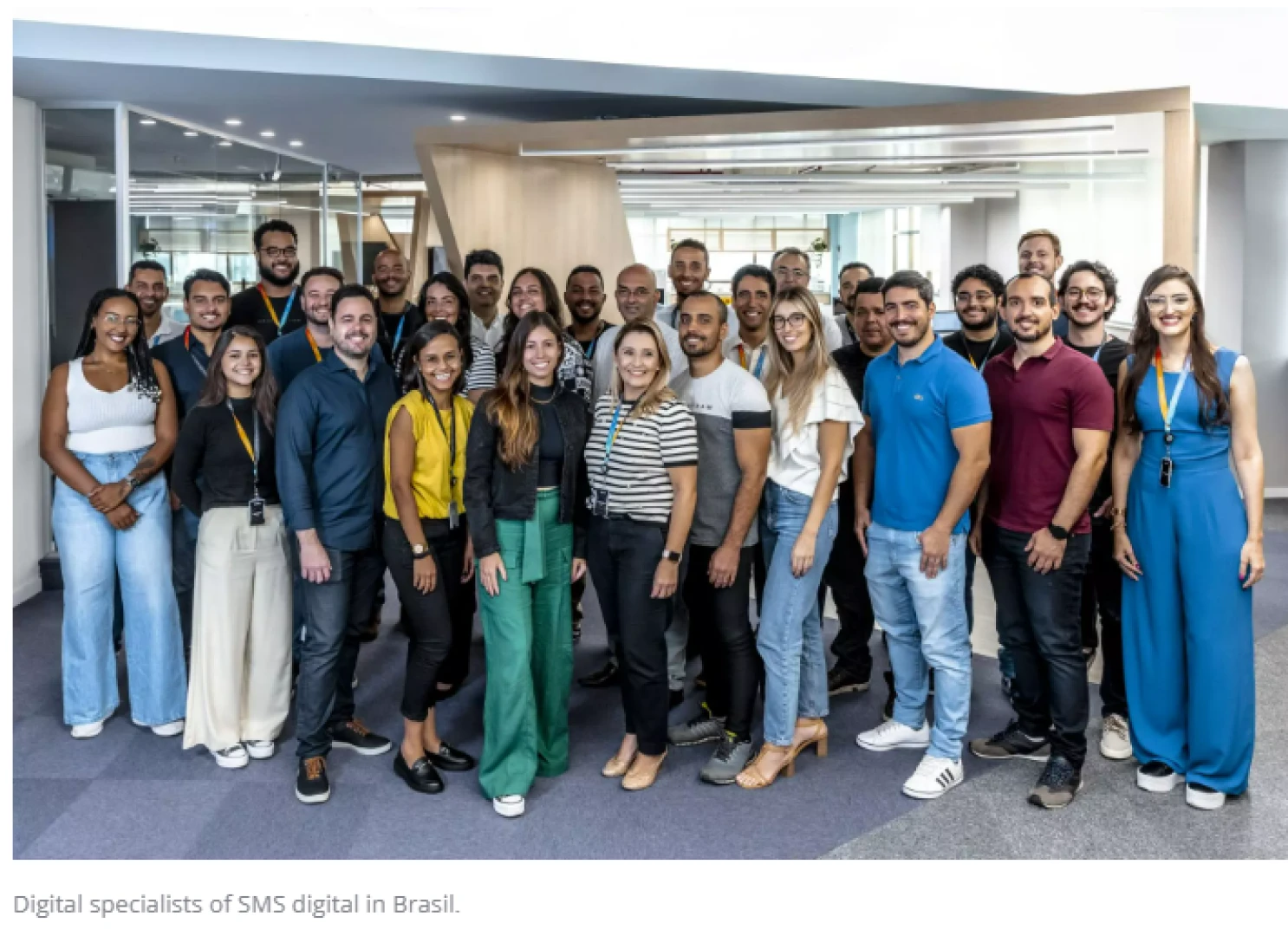
1952: A partner for megaprojects - Building an integrated steel plant in India
In recent months, SMS has received orders from H2 Green Steel and ThyssenKrupp Steel worth over a billion euros each, making them the two largest orders in the company's history. Successfully managing such megaprojects has been one of our key strengths for many decades.
Five years after gaining its political independence, India wants to build up its own steel industry to become economically independent as well. German companies are to deliver the plants for the first integrated steel mill. The German government is eager to support the project as best it can and finances large parts of it through loans provided as development aid. The contract goes to a consortium including Siemag, Mannesmann-Meer, Demag AG and Maschinenfabrik Sack, several of the companies that today make up SMS group. The SAIL plant in Rourkela becomes the nucleus of the Indian steel industry, which is now the second largest in the world, producing around 125 million metric tons per year.
For many employees of these companies, the project is probably among the most exciting chapters of their professional careers. In many cases, they spend over a year in a place that, at the time, is practically seen as the other side of the world. The Siemag staff magazine recounts the long journey from Hilchenbach to Rourkela by plane and train, the intense heat, tropical climate and language problems they encountered, but equally the pleasure of sampling the "wonderful and delicious" local cuisine. For leisure time, the German companies set up facilities including an outdoor cinema, a swimming pool and a football field.

The project company
The megaproject in Rourkela was certainly something extraordinary given its size and duration of more than ten years, but it was not a complete exception. The earliest international milestones for SMS include supplying the first rolling mill to China in 1904 and an order from Alcoa in the USA in 1928 for what was then the world's largest aluminum rolling mill. In the 1930s, there are major orders from France and the Soviet Union and in the 1960s and 70s, SMS carries out large turnkey projects in places including Brazil, Venezuela, and Nigeria.

1970ies and 80ies: Large-scale projects in China
One milestone on the way to becoming the global market leader in metallurgical plant construction is the completion of two major projects in Wuhan and Baoshan in the 1970s and 80s. At that time, the Chinese government wants to establish its own flat steel production as part of its modernization policy and to boost the domestic economy. Their negotiating partner at SMS is Heinrich Weiss, who just recently took the helm at the company. He recognizes the huge potential in the market, which until then had been practically inaccessible to Western companies, and he is prepared to accept the economic risks. His courage pays off: with these two contracts, SMS demonstrates both that it can handle such large-scale projects and that it is at the forefront of technology. These two projects lay the foundation for many other orders in the decades to come.
The major project at Baosteel involves supplying a hot strip mill and a cold rolling mill. It remains the company's largest order for almost three decades. Several hundred SMS employees and their families are relocated to China during the implementation phase, in some cases for several years. They install nearly 100 metric tons of components on site and successfully commission the plants. In turn, more than 1,600 Chinese employees come to Germany during the Baoshan project to supervise production or undergo training.
1989: Pioneering solutions - We invent CSP® technology
Can a company exist for 150 years without innovating? Of course not. Which is why in this episode, we take a look at some of our inventions that have transformed the world of metals. And we give an insight into how we are working on innovations for tomorrow’s world.
It is the summer of 1989, in the middle of cornfields at the edge of the small American town of Crawfordsville, when SMS and Nucor come together to write history: they put the first thin slab casting-rolling plant into operation. The newly developed funnel-shaped copper mold and the optimized submerged entry nozzle make “near-net-shape slab casting” possible. The slabs, just 50 millimeters thick, pass through a short tunnel furnace before being directly rolled down to their final dimensions in a finishing mill. As a result, the energy-intensive slab reheating and prerolling processes are no longer required. The name of this new technology? Compact Strip Production, or CSP® for short.
At that time, six years had already passed since the inventor’s flash of inspiration. Yet the road to a product’s market maturity is long. In 1985, working in total secrecy, SMS builds a test facility in its own foundry in Kreuztal, where it puts this new process to the test. Yet finding the first customer for the revolutionary plant concept proves to be just as difficult. All the established steel producers pass on the idea, until US-based Nucor decides to take a chance on it. And this courageous step pays off: Despite a stagnating US steel market, the plant is commercially successful right from the outset, thanks to its low manufacturing costs.
Every new CSP® plant brings with it a further enhancement of the technology. Before long, CSP® customers are producing strip for the automotive industry, high-strength grades, and tube steels. At the same time, we expand our product range to include ultrathin (down to 0.8 millimeters) and thick strip (up to 25.4 millimeters). The latest stage in the development of this technology is CSP® Nexus, which offers even higher productivity, greater flexibility, and the opportunity to produce hot strip in a carbon-neutral way.

Concast means Continuous Casting
CSP® technology would be unthinkable without the development of the continuous casting process that came before it – another invention of the SMS family. The first industrial continuous casting plant for steel to feature an oscillating mold is developed in the 1950s by American metallurgical engineer Irving Rossi. In contrast to the hitherto common process of pouring portions of molten metal into permanent molds, the continuous casting of steel to produce slabs or billets provides for significantly higher productivity and quality levels. This is not limited to the casting process itself but also to hot rolling, as the upstream ingot and billet mills, customarily used up until then, are no longer required.
In 1954, Rossi founds Concast AG, short for “Continuous casting”, in Zürich, Switzerland. As early as 1956, Concast and Schloemann sign a cooperation agreement. In 1969, the Düsseldorf-based company assumes majority control of Concast. As a pioneer in this field, we have continued to offer the widest range of continuous casting technology solutions right up to the present day. This includes, for example, slabs with a thickness of between 50 and more than 500 millimeters and round billets 1,000 millimeters in diameter.

The seamless revolution
Even now, the seamless tube is inextricably linked to the name “Mannesmann”. 1885 is the year in which brothers Reinhard and Max Mannesmann present their solution that combines cross and pilger rolling, thus enabling the production of seamless tubes. Maschinenfabrik Meer delivers its first seamless tube rolling mill in 1923. From 1926 to 1999, “Meer”, as it is known, is part of the Mannesmann group and thus directly involved in advancing and perfecting the tube and pipe making process.
In 2003, SMS launches its PQF® technology (Premium Quality Finishing) on the market. It is designed to manufacture the highest quality products in an efficient and reliable manner, whether it’s high-alloy steel tubes or especially thin-walled precision tubes. As less material is used during production, yield is higher than with conventional solutions. Because only a slight amount of reheating takes place during the rolling process, PQF® also reduces the carbon footprint of seamless tube production.

How the Bell-Less Top system transformed blast furnace technology
Among all the many innovations developed by Paul Wurth, the bell less top system (or BLT for short) is one that stands out. In the early 1970s, it provides the solution to one of the biggest problems of the steel industry, which, on the one hand, wanted bigger and more productive blast furnaces, while having to accept on the other hand that this was not possible with the traditional, superheavy furnace top. Many companies seek to address this issue, but it is the bright minds at Paul Wurth who ultimately come up with the ideal solution: the bell less top. With this revolutionary concept, the bell system is replaced by a rotating chute, which enables continuous charging and allows operators to position the charging material precisely in the blast furnace.
The first installation of the system in blast furnace number 4 at Thyssen in Duisburg-Hamborn in January 1972 impressed even the doubters and skeptics. The bell less top goes on to have a huge impact on the development of Paul Wurth and on the industry as a whole, as all over the world it enables the construction of larger blast furnaces with far higher productivity levels. The system is subsequently installed in over 800 blast furnaces across the globe. And today, with the BLTXpert, the Bell Less Top performance and condition monitoring system, this outstanding technology is part of the digital future of iron production.
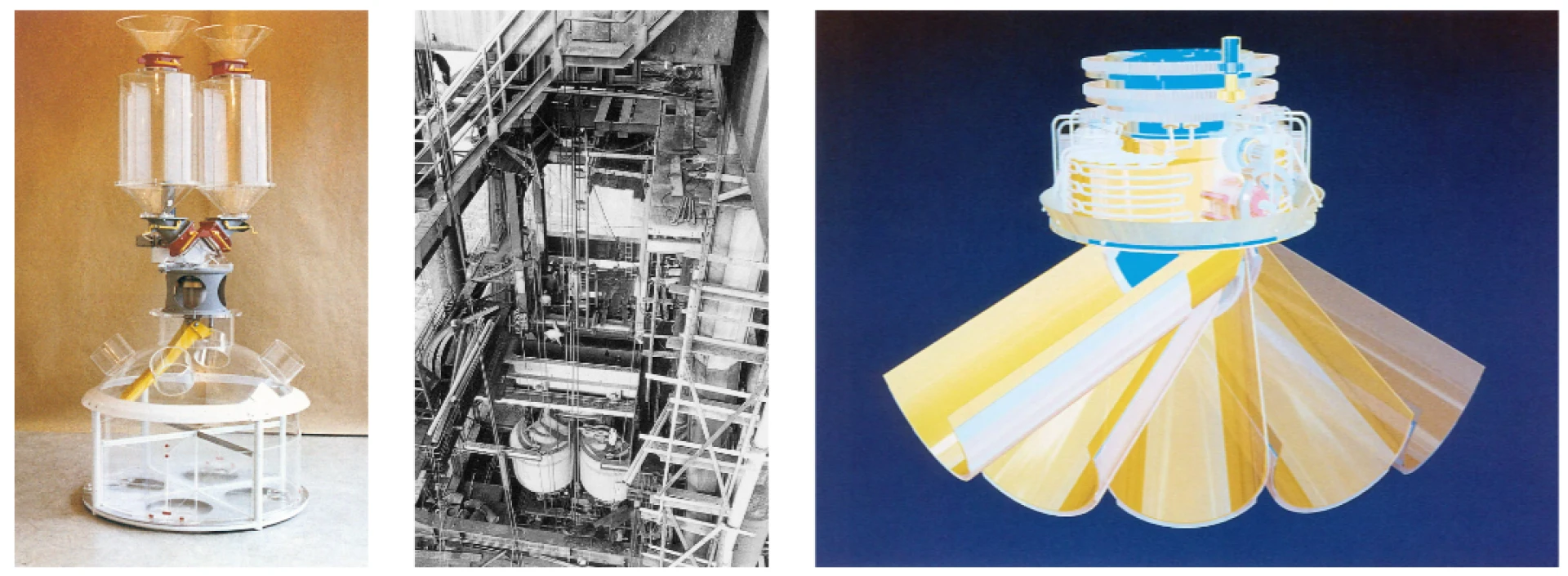
Innovation is part of our DNA
The above examples show: It is in our company’s DNA to explore new technologies and to work closely with our customers to write history anew.
Yet there is not only one source of innovation. Alongside customers’ individual wants and needs, the big social, economic, and technical trends also inspire us, of course. Among the key drivers now are digitalization and green metals. That’s why our #turningmetalsgreen mission is also a logical consequence of the transformative phase the entire metals industry is currently going through in the fight against climate change. The fact that our customers will have to become greener and more sustainable is what motivates us to develop innovative technologies that push the boundaries of what is possible. That is because we are a key enabler of this transformation.
We innovate at many different levels. Our Research & Development unit plays a vital role in this. Interdisciplinary teams develop new plants, technologies, and processes and, to do this, utilize the latest tools and methods, such as structure analyses, fluid mechanics, dynamic simulations, or virtual and augmented reality. They also collaborate closely with university and non-university research institutions.
It goes without saying that there can be no innovation without investment: last year alone, more than EUR 129 million went into the field of research and development. The Innovation Hub we set up in 2023 is again taking our research work to the next level. The clear goal here is to bring innovations quickly to market maturity, in order to make decisive advances in the decarbonization of the metals industry.
There’s one other thing you need to drive innovation: courage. Back in 1985, the construction of a CSP® pilot plant represented a considerable financial risk. The same applies today. When the foundation stone for Mercedes-Benz’s battery recycling factory is laid in March 2023, it constitutes the first major order for our joint venture Primobius. The development of the technology would not be feasible without the tests on the pilot plant in Hilchenbach.
What are the next big innovations? We think it is EASyMelt. The electric-assisted syngas smelter is an alternative to direct reduction and is aimed at accelerating the decarbonization of existing integrated steel plants. In 2023, we signed a memorandum of understanding with Tata Steel to implement our innovative EASyMelt technology in a blast furnace in India. It is quite possible that the next revolutionary technology will emerge from Jamshedpur in India.
FONTS:
Muitas raízes – uma empresa - SMS group GmbH (sms-group.com)
1904: Nós fornecemos nosso primeiro laminador para a China - SMS group GmbH (sms-group.com)
Um parceiro para megaprojetos - SMS group GmbH (sms-group.com)
Soluções pioneiras - SMS group GmbH (sms-group.com)